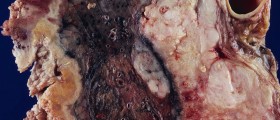Subarachnoid hemorrhage is a medical term used for the bleeding in the area between the arachnoid membrane and the pia mater which both surround the brain. In some cases, this type of hemorrhage may occur due to a ruptured cerebral aneurysm while in some other cases it may be associated with different types of head injuries. Subarachnoid hemorrhage is actually a certain type of stroke and it is a relatively common health issue. It is a severe medical condition because it may lead to serious disability or even death. 50 percent of cases of subarachnoid hemorrhage are fatal.

There are different grading scales for the subarachnoid hemorrhage. First grade of subarachnoid hemorrhage is associated with an asymptomatic or minimal headache and slight neck stiffness and its survival rate is 70 percent. Second grade is associated with moderate to severe headaches, neck stiffness and no neurological deficits except the cranial nerve palsy. The survival rate for the second grade is 60 percent. The third grade subarachnoid hemorrhage is associated with drowsiness and minimal neurologic deficit and its survival rate is somewhere around 50 percent. The fourth grade subarachnoid hemorrhage is stuporous and it involves moderate to severe hemiparesis and sometimes even early decerebrate rigidity and vegetative disturbances. The survival rate for the fourth grade is 20 percent. The fifth and the most severe grade of subarachnoid hemorrhage involves moribund, decerebrate rigidity and deep coma. Only 10 percent of patients with this grade of subarachnoid hemorrhage manage to survive.
Up to 85 percent of cases of spontaneous subarachnoid hemorrhage are triggered by a rupture of a cerebral aneurysm. For those who do not know, this is a weakness of the wall in one of the arteries so that it becomes enlarged. These aneurysms are initially very hard to detect on an angiogram. Other potential causes include bleeding into tumors, different disorders of the blood vessels in the spinal cord and different disorders that affect all blood vessels. Other less common causes of subarachnoid hemorrhage may include pituitary apoplexy, problems with blood clotting, anticoagulant therapy, sickle cell anemia and cocaine abuse. Subarachnoid hemorrhage may also occur in most cases of traumatic brain injury.
Signs and Symptoms
The most common symptom which is present in most cases of subarachnoid hemorrhage is thunderclap headache. This headache is described by many as the worst headache of their lives. It usually pulsates towards the back of the head. Some people who suffer from subarachnoid hemorrhage tend to suffer from vomiting, confusion, decreased levels of consciousness and neck stiffness. Some cases may involve coma, while certain others can be characterized by seizures. Some cases may involve the rising intracranial pressure which is usually characterized by brain herniation, loss of the papillary light reflex and a dilation of the pupil. Other possible symptoms may involve vitreous hemorrhage, bleeding under the hyaloid membrane and bleeding into the eyeball. Bleeding from the posterior communicating artery may be indicated by palsy or oculomotor nerve abnormalities which involve looking downward and outward and an inability to lift the eyelid. When the condition is combined with raised intracranial pressure it may lead to an increased activity of the sympathetic system. This activity may lead to certain dangerous medical complications such as increased blood pressure, cardiac arrest, electrocardiographic changes and cardiac arrhythmias.
Diagnosis
In order for doctors to diagnose subarachnoid hemorrhage, one needs to be evaluated properly, along with extensive info on medical history and a thorough physical examination. The most commonly used evaluation tool is the computed tomography scan of the brain which is highly sensitive and very accurate in identifying the occurrence of subarachnoid hemorrhage. Other commonly used type of evaluation involves the use of magnetic resonance imagining which in some cases may be even more sensitive than computed tomography. Another successful method of diagnosing subarachnoid hemorrhage is lumbar puncture which involves the removal of cerebrospinal fluid by utilizing a needle. Spectrophotometry may also be used in some cases as it involves measuring the absorption of particular wavelengths of light. Angiography is another good method for diagnosing the condition and it involves the injections of radiocontrasts into the brain arteries.
Management
In all cases of subarachnoid hemorrhage the patient needs to be stabilized first. Constant monitoring at all times is also of utmost importance. Proper nutrition usually needs to be taken care of with tube feeding. Compression stockings or intermittent pneumatic compression of the calves are commonly utilized in order to avoid the occurrence of deep vein thrombosis. Other drugs which are commonly used to stabilize the overall condition of the patient may or may not involve antiemetic drugs, benzodiazepines, sedation and analgesic medications. It is also important to prevent the recurrent bleeding from taking place. It is largely recommended that all preventative methods of treatment need to be used in people who are characterized by a reasonable life expectancy.

















Your thoughts on this
Loading...